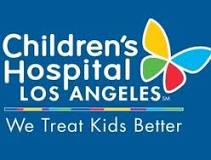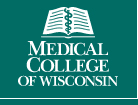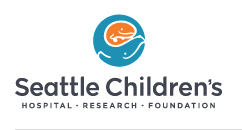A Study Of Panobinostat In Children With Refractory Hematologic Malignancies
| Status: | Completed |
|---|---|
| Conditions: | Cancer, Other Indications, Blood Cancer, Lymphoma, Hematology |
| Therapuetic Areas: | Hematology, Oncology, Other |
| Healthy: | No |
| Age Range: | 8 - 21 |
| Updated: | 4/21/2016 |
| Start Date: | March 2011 |
A Phase I Dose Finding Study Of Panobinostat In Children With Refractory Hematologic Malignancies
This study is for patients with relapsed or refractory Acute Lymphoblastic Leukemia (ALL),
Acute Myelogenous Leukemia (AML), Hodgkin's Disease (HD) or Non-Hodgkin's Lymphoma (NHL).
Panobinostat is a new drug that is considered investigational because it has not been
approved in the United States by the Food and Drug Administration (FDA), or in any other
country. Panobinostat is a histone deacetylase inhibitor (HDACi) and interferes with gene
expression found in cells causing them to stop growing or die. Panobinostat has been used in
several hundred adults who had leukemia, HD, NHL and other solid tumors. Panobinostat has
not been given to children.
This is a phase I study. In a phase I study, drugs are tested to the highest dose that can
be safely given. Drugs are given at gradually increasing dosages until there are
unacceptable side effects. The goal of the Phase I study is to find out the dose of
panobinostat that can be safely given to children with relapsed ALL, AML, HD and NHL.
Acute Myelogenous Leukemia (AML), Hodgkin's Disease (HD) or Non-Hodgkin's Lymphoma (NHL).
Panobinostat is a new drug that is considered investigational because it has not been
approved in the United States by the Food and Drug Administration (FDA), or in any other
country. Panobinostat is a histone deacetylase inhibitor (HDACi) and interferes with gene
expression found in cells causing them to stop growing or die. Panobinostat has been used in
several hundred adults who had leukemia, HD, NHL and other solid tumors. Panobinostat has
not been given to children.
This is a phase I study. In a phase I study, drugs are tested to the highest dose that can
be safely given. Drugs are given at gradually increasing dosages until there are
unacceptable side effects. The goal of the Phase I study is to find out the dose of
panobinostat that can be safely given to children with relapsed ALL, AML, HD and NHL.
Inclusion Criteria:
- Patients must be ≤ 21 years of age at the time of enrollment.
- Patients must have one of the following:
1. Patient must have relapsed/refractory acute myelogenous leukemia (AML) with ≥ 5%
blast in the bone marrow or biopsy confirmed chloroma. Patient may have CNS 1, 2
or 3 disease. Isolated CNS relapse is not eligible.
2. Patient must have relapsed/refractory acute lymphoblastic leukemia (ALL) with ≥
5 blasts in the bone marrow or biopsy confirmed extramedullary disease. Patient
may have CNS 1, 2 or 3 disease. Isolated CNS relapse is not eligible.
3. Patient must have relapsed or refractory non-Hodgkin's lymphoma (NHL) or
Hodgkin's disease. Patients must have CNS 1 disease. Patient must have
histologic verification of disease at original diagnosis. Patient must have
measurable disease documented by clinical or radiographic criteria or bone
marrow disease present at study entry.
- Karnofsky > 50% for patients > 16 years of age and Lansky > 50% for patients less
than or equal to 16 years of age. (See Appendix I for Performance Scales).
- Patient must have a life expectancy of 8 weeks.
- PRIOR THERAPY Patients must have fully recovered from the acute toxic effects of all
prior chemotherapy, immunotherapy, or radiotherapy prior to entering this study.
1. Patients with AML must have had at least 2 prior therapeutic attempts including
frontline induction.
2. Patients with ALL must have had at least 3 prior therapeutic attempts including
frontline induction.
3. Radiotherapy: At least 28 days must have elapsed since and radiation therapy.
4. Hematopoietic Stem Cell Transplant:
Patients who have had previous allogeneic HSCT must have grade I or less of
Graft-versus-Host Disease (GVHD) and have not received immunosuppressive
medication for at least 90 days.
5. Hematopoietic grow factors: It must have been at least 7 days since the
completion of therapy with GCSF or other growth factors at the time of
enrollment. It must have been at least 14 days since the completion of therapy
with pegfilgrastim (Neulasta®).
6. Biologic/Immunologic (anti-neoplastic) therapy: It must be at least 28 days
since the completion of therapy with a biologic/immunologic agent such as a
monoclonal antibody prior to study enrollment and at least 28 days since
non-study chemotherapy has been administered, excluding CNS directed therapy as
described in Section 4.1.
7. Prior HSCT for Hodgkin's Lymphoma: Patients with Hodgkin's lymphoma must have
had prior attempt at autologous HSCT.
- Renal and Hepatic Function
1. Patient's serum creatinine must be ≤ 1.5 x institutional upper limit of normal
(ULN) according to age. If the serum creatinine is greater than 1.5 times
normal, the patient must have a calculated creatinine clearance or radioisotope
GRF ≥ 70mL/min/1.73m2.
- Pediatric Population (age <18): Calculated creatinine clearance ≥ 90
ml/min/1.73m2 as calculated by the Schwartz formula for estimated
glomerular filtration rate (GFR)
- Adult Population (age >18): Serum creatinine <1.0 mg/dL; if serum
creatinine >1.0 mg/dL, then the estimated glomerular filtration rate (GFR)
must be >60 mL/min/1.73 m2
2. Patient's ALT must be < 5 x institutional upper limit of norm ULN.
3. Patient's total bilirubin must be ≤ 1.5 x ULN.
- Cardiac Function
a. Patient must have a shortening fraction ≥ 29% or an ejection fraction ≥ 40% by
ECHO/MUGA.
- Reproductive Function
1. Female patients of childbearing potential must have a negative urine or serum
pregnancy test confirmed prior to enrollment.
2. Female patients with infants must agree not to breastfeed their infants while on
this study.
3. Male and female patients of child-bearing potential must agree to use an
effective method of contraception approved by the investigator during the study.
Exclusion Criteria:
- Patients will be excluded if they are unable to swallow capsules whole.
- Patients will be excluded if they have received previous therapy with HDAC, DAC,
HSP90 inhibitors or valproic acid anticancer therapy. Valproic acid therapy is not
allowed for any reason while on this study.
- AML patients who are candidates for allogeneic stem cell transplant are excluded.
- Patients will be excluded if they have a systemic fungal, bacterial, viral or other
infection that is exhibiting ongoing signs/symptoms related to the infection without
improvement despite appropriate antibiotics or other treatment.
- Gastrointestinal Function
1. Impairment of GI function or GI disease that may significantly alter the
absorption of panobinostat.
2. Patients with diarrhea > CTCAE grade 2.
- Patients will be excluded if there is a plan to administer non-protocol chemotherapy,
radiation therapy, or immunotherapy during the study period, excluding CNS directed
therapy upfront for AML patients and continuing for CNS positive patients as
described in Section 4.1. Cyto-reduction with hydroxyurea can be initiated and
continued for up to 24 hours prior to the start or protocol therapy.
- Patients will be excluded if they have significant concurrent disease, illness,
psychiatric disorder or social issue that would compromise patient safety or
compliance, interfere with consent, study participation, follow up, or interpretation
of study results.
- Patients with known positivity for human immunodeficiency virus (HIV) or hepatitis C;
baseline testing for HIV and hepatitis C is not required.
- Cardiac Exclusion Criteria:
Patients will be excluded if these meet any of the following:
1. History or presence of sustained ventricular tachyarrhythmia. (Patients with a
history of atrial arrhythmia are eligible but should be discussed with the study
chair prior to enrollment).
2. Any history of ventricular fibrillation or torsade de pointes.
3. Bradycardia defined as HR< 50 bpm. Patients with pacemakers are eligible if HR ≥ 50
bpm.
4. Screening ECG with a QTc > 450 msec.
5. Patients using medications that have a relative risk of prolonging the QT interval or
inducing torsade de pointes if treatment cannot be discontinued or switched to a
different medication prior to starting study drug.
6. Right bundle branch block + left anterior hemiblock (bifascicular block).
7. Patients with myocardial infarction or unstable angina ≤ 6 months prior to starting
study drug.
8. Other clinically significant heart disease (e.g., CHF NY Heart Association class III
or IV, uncontrolled hypertension, history of labile hypertension, or history of poor
compliance with an antihypertensive regimen).
9. Patients with leukemia must not be known to be refractory to red blood cell or
platelet transfusions.
We found this trial at
20
sites
Childrens Hospital Los Angeles Children's Hospital Los Angeles is a 501(c)(3) nonprofit hospital for pediatric...
Click here to add this to my saved trials
Click here to add this to my saved trials
Nationwide Children's Hospital At Nationwide Children’s, we are creating the future of pediatric health care....
Click here to add this to my saved trials
3181 Southwest Sam Jackson Park Road
Portland, Oregon 97239
Portland, Oregon 97239
503 494-8311

Oregon Health and Science University In 1887, the inaugural class of the University of Oregon...
Click here to add this to my saved trials
Click here to add this to my saved trials
Click here to add this to my saved trials
Click here to add this to my saved trials
Click here to add this to my saved trials
Medical College of Wisconsin The Medical College (MCW) of Wisconsin is a major national research...
Click here to add this to my saved trials
Click here to add this to my saved trials
Vanderbilt Children's Hospital Monroe Carell Jr. Children's Hospital at Vanderbilt is one of the nation's...
Click here to add this to my saved trials
Click here to add this to my saved trials
Click here to add this to my saved trials
Click here to add this to my saved trials
Click here to add this to my saved trials
Seattle Children's Hospital Seattle Children’s Hospital specializes in meeting the unique physical, emotional and developmental...
Click here to add this to my saved trials
111 Michigan Ave NW
Washington, District of Columbia
Washington, District of Columbia
(202) 476-5000

Childrens National Medical Center As the nation’s children’s hospital, the mission of Children’s National Medical...
Click here to add this to my saved trials




